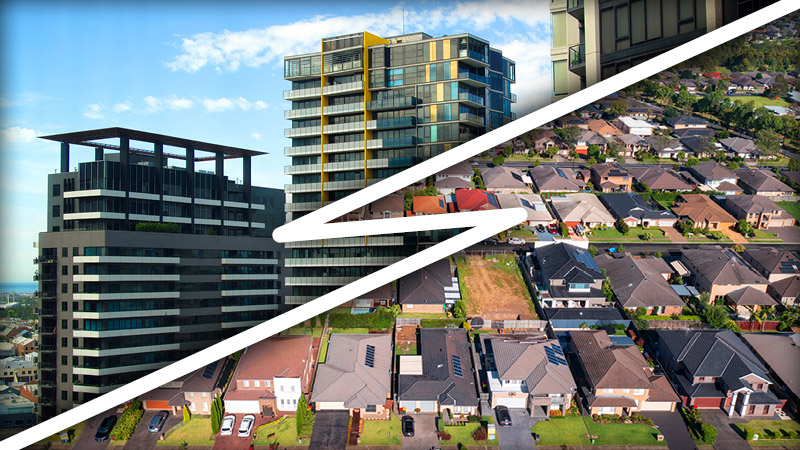[ad_1]
When weighing up whether to invest in inner city apartments or outer suburban houses, there are a range of factors to consider, including land values, depreciation and rent returns.
When weighing up whether to invest in inner city apartments or outer suburban houses, there are a range of factors to consider.
Plenty of people will advise that investing in the inner city is the best option.
That’s often because they live in the inner city themselves and tend to believe everyone wants to live so close to work they can take a lift downstairs and walk there, or find a tenant who wants the same convenience.
While in the past that may have been the case, the tables turned during COVID. Suburban vacancy rates plummeted while they soared in the inner cities.
Previously popular with international students and CBD workers, the demand for inner city units fell off a cliff.
International students went back to their home countries and workers were no longer needed at their central office desks. They could work from anywhere and all of a sudden living in a tiny inner-city apartment or expensive inner-city house no longer seemed quite so appealling.
Land ahoy
But it’s not just the unusual circumstances of COVID that potentially makes investing in the inner city the wrong decision.
There are a few reasons to baulk at buying inner city residences. Firstly, the bulk of inner-city properties are units, and small units at that.
There’s plenty around and even more being built, so unless it’s a multi-million-dollar luxury penthouse, it is unlikely to skyrocket in value.
You are also limited in the type of tenants you can attract, as generally families are looking for something more substantial than an inner-city unit. With likely tenants restricted to singles or couples, there’s a limit to the amount of rent that can be charged or annual increases applied.
When it comes to houses, there is a much lower proportion of renters in the inner city than the outer areas. The by-product of that is investors either end up with a newer home and low rental yield, or an older home with a decent rental yield but which leaks money on maintenance bills.
The main reason investing in the outer city stacks up better than the inner city is land value.
It’s the land component of any property that grows in value. Inner city units give you little to no land, and while inner-city houses give you the land, they are expensive to hold.
While buildings depreciate in value, land appreciates. That’s one reason investors may be better off looking at the outer suburbs, where they can buy a freestanding house on a block of land while attracting a decent rental return.
For some, the premium option is to buy two outer city blocks of land with houses on them as opposed to one inner city block of land. It can generate better cash flow and equal, if not better, capital gains.
The whole point of investing in property is to achieve good capital growth and in order to achieve growth in five to ten years, at least 30 per cent land content is optimal. With most units the land only makes up about 10 per cent of the purchase price.
Land is a vital component when investing but just as important is where it is located.
The right suburb to invest in must be identified, including the outer suburbs with long-term sustainable population growth, infrastructure investment and employment opportunities.
Areas close to the amenities families are looking for are crucial, such as schools, transport, shops and recreation areas.
Housing markets have a much stronger reputation for being able to withstand turbulence in the market (GFC and the pandemic being a case in point), and the outer suburbs appear better placed to weather these storms than the inner city.
[ad_2]
Source link

